| Botanical Name |
|
| Family |
Asclepiadaceae - The carrion or milkweed family. |
| Pronunciation |
|
| Common Name(s) |
|
| Plant Group |
- Ground Cover A plant with a low-growing, spreading habit, grown specifically to cover the ground.
- Succulent A plant having fleshy stems or leaves often adapted to dry conditions.
|
| Plant Size |
- Small
| Tree | 4m to 8m |
| Shrub | 50cm to 75cm |
| Perennial/ground cover | 10cm to 20cm |
| Bulb | 20cm to 30cm |
| Succulent | 10cm to 20cm |
|
| Position |
- Dry Shade Shady areas where soil has poor water retention or are dependent on rain for their moisture needs.
- Light or Dappled Shade Found below trees with sparse, open foliage. Ideal for the protection of herbaceous plants.
- Partial Shade The area is in shade for part of the day and in full sun for part of the day.
|
| General Information |
- Drought Tolerance: High The plant is well adapted to arid conditions; it can survive long periods of drought and high temperatures without extra water.
- Evergreen Plants that have leaves all year round.
- Frost: Tender A plant that will not survive any frost or low winter temperatures.
- Water Wise Plant species originating from low rainfall regions that require less water to survive and thrive than other plant species.
|
| Specific Information |
This family of plants are known as 'Carrion plants' as their flowers have an odour of rotting meat. They are pollinated by flies attracted to the smell. In nature, these plants form clumps in the shade of thickets and shrubs were they are sheltered from the hot rays of the sun. Plants prefer early morning or late afternoon sun. There is an interesting variation of flower colour - apart from the first photo, the pictures above were taken at the same time, from an area of approximately 3 square meters.
|
| Ad Break |
|
| Flowers |
| Description |
five pointed cupped star with 'life-belt' ring around the centre
|
| Season |
- Autumn Plants will seldom bloom for the entire season as given in the list, but should flower during a period within these parameters.
|
| Colour |
|
| Growth Rate |
- Moderate Specifying growth rate can be very misleading as there is considerable variation of growth rate depending on type and species of plant, available water, supplementary feeding, mulching and general care, as well as the plants suitability and adaptability to the garden environment.
|
| Plant Uses |
- Border A strip of ground, at the edge of a driveway or path in which ornamental plants or shrubs are planted.
- Container Trees, shrubs and ornamental species that can adapt to growing in a restricted environment.
- Edging A low growing plant that provides softness or definition to the edges of a bed or walkway.
- Filler Either a fast growing tree or shrub used temporarily to fill in an area while the permanent plants grow to a desired size, or a plant used to fill gaps in borders or beds.
- Ground Cover Low-lying plants that spread fast, require minimal maintenance, and cover large expanses or bare areas between bulbs or shrubs. They provide protection from erosion and drought and improve the visual appearance of the garden.
- Interplanting Arranging and planting plants in the garden that have different blooming times and habits of growth, extending the amount of time in which the area is in flower.
- Pot Plant A plant that needs a protected environment on a patio or indoors.
- Stabilize Banks Plant is used to prevent soil erosion because their roots will form a mat that stabilizes the soil and keeps it from washing away in heavy rains.
- Wild Garden An indigenous garden planted for the benefit of wildlife and birds. Provides food, water, a variety of mini-biomes and no poisonous chemicals are used.
|
| Distribution and Habitat |
endemic to the Eastern Cape Province, in thickets and under shrubs
|
| Planting Suggestions |
Water sparingly, allowing the soil dry out between waterings and feed the plants during the active growing seasons of winter and spring. Soil has to be well drained and rich in organic matter. Mix a well-drained, sandy medium consisting of equal parts of washed river sand, potting soil and topsoil. Try to emulate their preferred habitat when placing them in the garden, ensuring that they have protection from the sun during the hottest part of the day.
|
| Medicinal Uses |
|
| Ad Break |
|



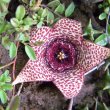
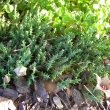
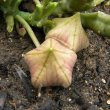
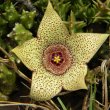
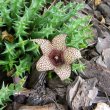
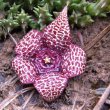
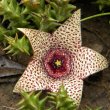
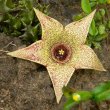


Discuss this plant
Share knowledge, ask a question or give an experience.